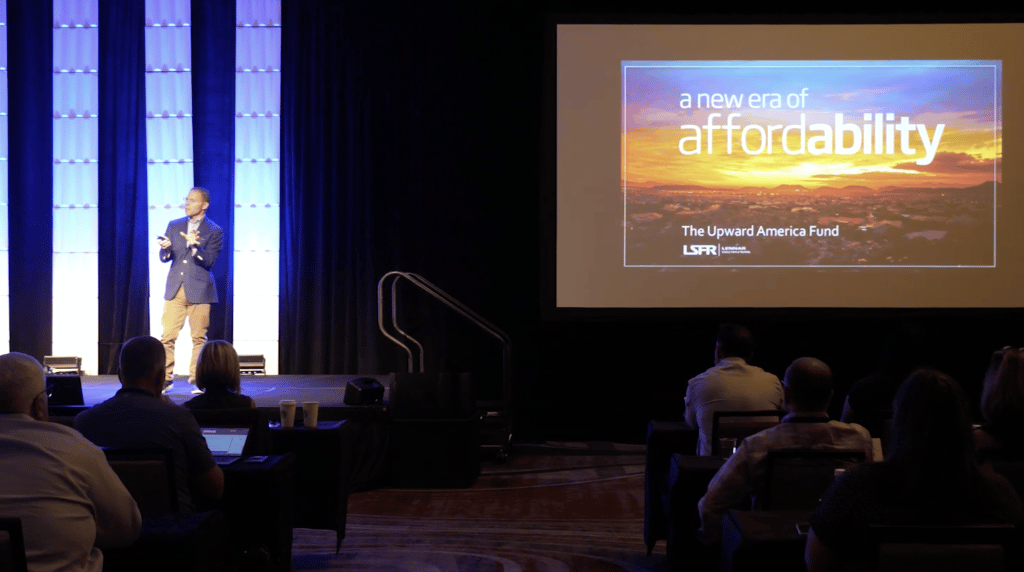The market is in a state of flux. The Federal Reserve’s efforts to manage inflation by raising interest rates has had ramifications in the U.S. and around the world. Companies adjusting to a post-pandemic “new normal” must decide how much office space to maintain, or whether they should have offices at all. Deals are being scaled back or put on hold. These and other issues facing the commercial real estate market were at the forefront of the recent LightBox PRISM conference.
During a keynote presentation, Greg Lindsay of Climate Alpha pointed to data from the Federal Reserve Bank of San Francisco and other organizations saying that remote work has been driving the home price surge. The bank argues that more than 60 percent of price appreciation during the pandemic was the result of remote work. Communities where it was concentrated appreciated faster. This important finding is a sign inflation is increasingly locked into the economy. Housing appreciation may be up forever because we’ve channeled so much value out of commercial office real estate into our homes, where people now work. We’re seeing more money moving into single-family rentals because people want more bedrooms but multifamily can’t accommodate them, and the U.S. didn’t build as many homes as it should have after the financial crash.

Inflation, climate change, and the pandemic are three key forces driving the current economy. Climate change may permanently lower productivity, leading to higher commodity prices, and we may see a long-term reduction in the workforce. Data from various sources show that between two and four million Americans have left the workforce temporarily or permanently due to long Covid—that’s three percent of the pre-pandemic workforce.
Sam Chandan, director of the Chao-Hon Chen Institute for Global Real Estate Finance at NYU, says the market’s debate about whether we’re in a recession is purely semantic. The Fed is reading the most current data, which shows extraordinarily strong inflationary pressure that has not abated as a result of various interventions.
The relative shift to higher costs of capital is undermining confidence, and in some cases is having a negative impact on or introducing headwinds to pricing. The pricing we’ve observed in the market captures the tailwind resulting from low-cost funds and an accommodative monetary policy in the U.S. that has become the norm over the course of more than a decade.
Chandan said that, based on the current trajectory, he believes the 30-year mortgage rate could approach eight percent by mid-2023. We’re already at 6.6 percent, so this isn’t a terribly aggressive baseline for a cast in the probabilistic model. However, it undermines housing affordability in a way that, depending on which side of the equation you’re on, is enormously beneficial to your industry, sector, or investment thesis—or incredibly undermining.

The most significant risk to outlook is a significant and thus far unresolved conflict between U.S. monetary and fiscal policy. The Fed is clearly working to raise the cost of capital in a way that will slow businesses and consumers, rein in the demand curve, give us some wiggle room by slowing down the job market. That’s relieving some of the price pressures.
On another front, as we approach the final leg of a midterm election season and move into a presidential election cycle, Chandan says there is strong motivation in the fiscal policy world to keep things going strong, to keep job growth as healthy and robust as it can be, to keep unemployment rates low. People who should be graduating out of renting into homeownership are not doing so.
How can we ensure that American families have housing that provides access to quality schools, transit hubs, and social and economic opportunity? These things are now at risk, and have been for several years. While we see a strong long-term outlook for multifamily, we don’t have the supply in an environment of zoning restrictions, limited land resources, and the tightening of construction financing—each a necessary part of the construction equation that would alleviate some multifamily supply pressures. Chandan said he’d like to see strong job creation and see wages rising without inflation. Historically, however, the conflict between monetary and fiscal policy has not led to soft landings.
LightBox’s Fall 2022 Investor Sentiment Report echoes some of these concerns about ongoing uncertainty and challenges such as inflation, demand, high material costs, and labor shortages. “As financial markets react to the Fed’s ongoing efforts to tame inflation, many commercial real estate investors and lenders are recalibrating, stepping back or taking a more cautionary approach to investment activity. This sentiment strikes a notable contrast to the optimistic forecasts voiced at the beginning of 2022, when many industry experts expressed confidence in a strong growth trajectory for the year. Those optimistic projections became obsolete by mid-year, however, as rapidly changing economic conditions ushered in a wave of uncertainty.”
Check out the LightBox PRISM Resource Hub
